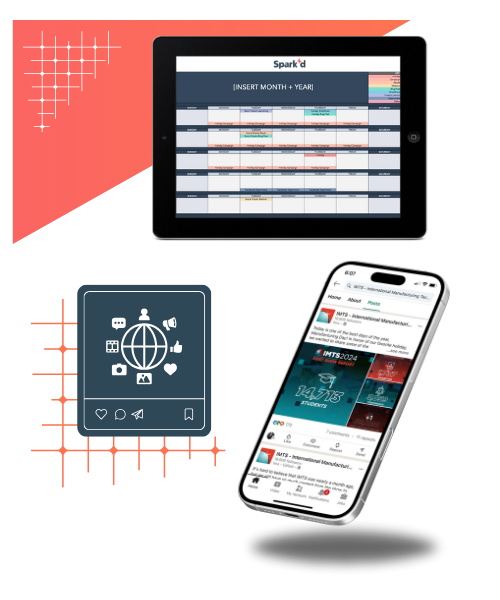.png)
Engage Customers with Social Media Marketing
Create and share content that engages your ideal customers on relevant social media platforms, encouraging them to interact with your brand, and ultimately driving traffic to achieve marketing goals.

What is Social Media Marketing?
Social media marketing involves creating valuable content and publishing it to the most relevant social media platforms (i.e., the channels where technical buyers tend to "hang out") to:
- Advertise your products and services
- Foster a community with your target audience
- Encourage prospects and partners to engage with your brand
- Increase traffic to your website
So much of social media marketing is context-dependent. By that, we mean relevant channels and valuable content will be determined by whoever your ideal customer is, where they hang out, and what they deem valuable.
For job shops, we find that the most valuable channels are LinkedIn and YouTube. The former is where lots of networking and learning happens, especially for technical buyers, while the latter is excellent for visually showcasing your shop's capabilities and expertise.
As far as valuable content goes, this could be short, punchy, impactful videos featuring your manufacturing engineers with a monthly GD&T best practice or a blog post about why you should incorporate your CNC machining supplier into the product development process as early as possible.
Context aside, social media marketing is a constant game of experimenting with content, measuring what works, and refining your strategy over time.
Benefits of Social Media Marketing
There are a number of reasons why your company should use social media marketing, and they all impact your bottom line one way or another.
Drive brand awareness
Nurture leads and improve conversions
Build relationships with your customers
Keep tabs on your competition
You can't expect to accomplish any of this, though, without a solid game plan. We're talking about a social media marketing strategy.
Develop a Social Media Marketing Strategy
Define clear goals
Understand your buyer personas and audience
Identify the best-fit social platforms
Choose relevant KPIs
Research your competition
Create unique, relevant, and engaging content
Build a schedule for your posts
Measure and adjust your strategy accordingly
